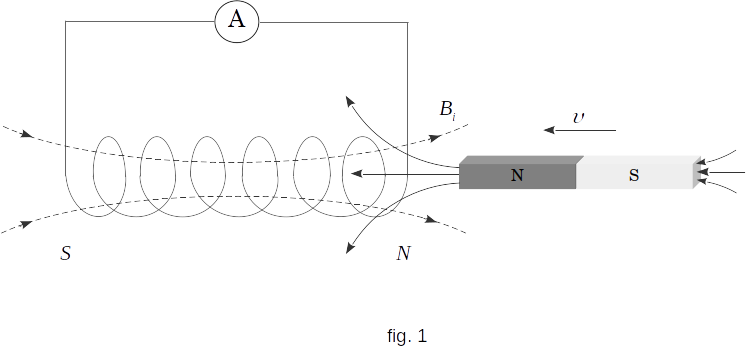From the Electromagnetic induction
132. Direction of inductive current. Lenz's Law
The resulting induction current interacts with the current which caused it or with the magnet. If the magnet (or coil with electric current) moves near to the closed conductor, the induction current that appears in the conductor will necessarily repel the magnet. Therefore, work must be done to bring the magnet closer to the conductor (coil). The induction current in this case is directed in such a way that its magnetic field is opposite to the field that caused this current (fig. 1). In this case, the coil will be similar to a magnet that faces the same pole of the moving magnet. The poles of the same name are repelled.

Imagine things would be different. You pushed the magnet slightly towards the coil, and it would have gone inside of it by itself. It would violate the law of energy conservation. After all, the kinetic energy of the magnet would increase and at the same time there would be a current, which itself requires energy, because the current emits heat.
When removing a magnet, on the contrary, the law of energy conservation requires that a force of attraction is created.
The induction current in this case is directed in such a way that its magnetic field coincides in the direction of the field which change created the current (fig. 2).

This law, established by scientist Lenz, makes it possible to determine the induction current direction in any case. According to Lenz's law, the direction of the electric current which is induced in a conductor by a changing magnetic field is such that the magnetic field created by the induced current seeks to compensate the initial changing magnetic field.
This means that if the magnetic flux \(\Phi_B\) increases, the induced current field tends to weaken it and is directed against the initial field (fig. 1). On the contrary, when the flux decreases, the field of induction current supports the flux \(\Phi_B\), i.e. it is directed along the initial field (fig. 2).